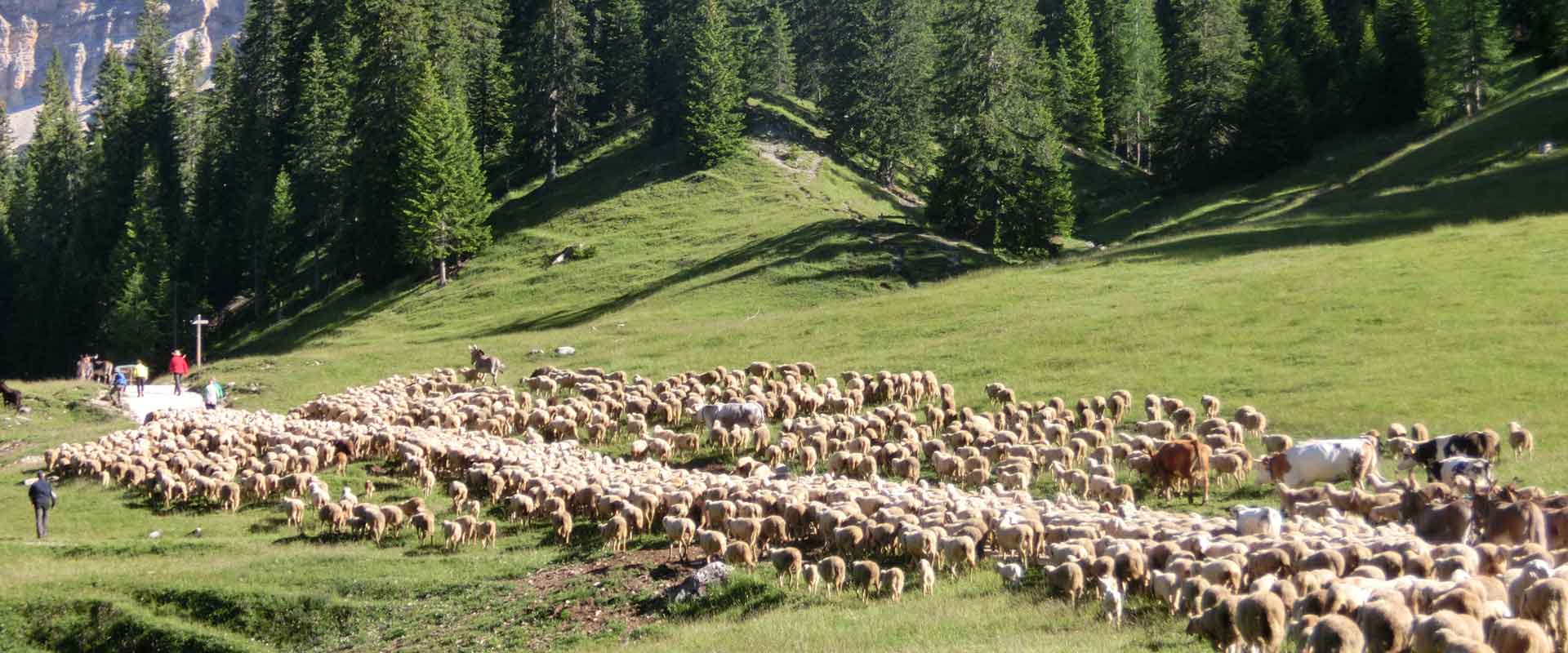MENU


Originally the Regole were mainly concerned with the management of pastures and only at a later time the institution assumed the collective management of forests and timber. The Regole d'Ampezzo still perform their traditional function of managing the territory with agroforestry purposes and are committed to preserving the environmental resources which have recently become a fundamental issue.
The forests of the Regole cover a surface of about 16,000 hectares, from valley floor to the upper limits of vegetation; they mainly consist of conifers: spruce, larch, silver fir, and cembra pine. Tree felling and the sale of forest products are the Regole’s main activity, both for the amount of work involved and for the annual income.
The transport of trees from the forests to the sawmills requires continuous maintenance of forest roads over a hundred kilometre long network. Maintenance works are done by the Regole, by periodically repairing forest trails. Forestry activities are regulated by a Forestry Plan and managed by the Regole, which employ specialised staff to carry out the different work phases
Construction timber
The Regolieri may obtain timber for the construction, restoration and maintenance of their dwelling homes. This right, known as “internal use”, is still enjoyed in accordance with the regulations provided for by the Laudi, which have always been very clear on the matter. Construction timber is granted only for “ascertained family needs and not for industrial purposes”. Each year, the best timber coming from the annual felling of trees is kept aside for the Regolieri.
Firewood
The Regolieri are entitled to a certain amount of firewood for domestic heating. The use of the špórer (cookstove) and the fornèl, the traditional wood burning stove tiled in majolica, is still widespread, often the main source of heating in Ampezzo homes. The Laudo currently in force decrees that every family head is entitled to 7 cubic metres of firewood per year, plus 1 cubic metre for each member. Firewood my either be collected by the Regolieri in the forests or delivered at home against payment of handling and transport expenses.
Pastures are managed by each single Regola and not by the Comunanza Regoliera. Because the number of livestock led to summer pastures has dropped considerably, only four of the original eleven Regole Ampezzane still maintain Pasture activities, and four shepherd’s huts are currently being used: ra Stua and Federa on the higher pastures, Lareto and Pezié de Parù on the lower pastures. Each Regola decides the number of livestock to be led to the mountain pastures during the summer and makes agreements with the breeders.
Nearly 400 cattle are hosted every year on the lands of the Regole, mainly calves and heifers, in addition there are over 700 sheep and some dozen heads of horses and goats. However, most of the animals are not from the Ampezzo valley and do not belong to the Regolieri, but to breeders of nearby valleys – Val Pusteria, Badia, and Livinallongo – who take their animals to these summer pastures. Livestock breeders in Cortina are few and their contribution in number of heads does not satisfy pasture maintenance requirements. In the past, leading animals out to summer pastures was fundamental to the lives of the Ampezzo families, whereas today grazing is mainly performed to maintain the pastoral, tourist, and environmental characteristics of the territory.
The Regole continue their secular activities by providing shepherds and by checking the animals’ state of health while out on the mountain pastures. Each malga has also restaurant, inn or farm holiday services; so that shepherds can supplement their salary with tourist incomes. In this way, pastoral activities – that have unfortunately decreased over the whole Alpine arc - are offered better hopes to survive.
The Regole’s heritage does not consist in forests and pastures only, but also of several houses and buildings. Nearly one hundred buildings stand over the lands of the Regole: shepherd huts and mountain inns, skiing facilities and service buildings for the staff. These immovable goods may be let or granted to third persons, but their uses and destinations must be supervised by the Regole.
The Dolomites above the pasturelands are property of the State and have been let to the Regole for about twenty years now. These lands, though already protected by the law, are not actually used, but are held in concession to prevent violations by private speculators because of the extraordinary scenic importance of the Dolomite massifs – the Tofane, Mount Cristallo, Croda Rossa, Croda da Lago, just to mention some.